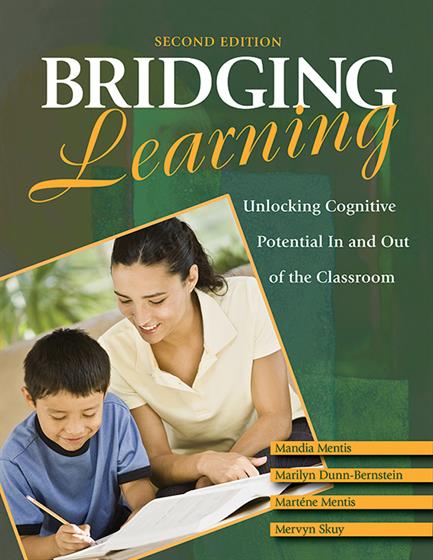Preface
Acknowledgments
About the Authors
Introduction
1. Organization
Organization: What, Why, When, and Where?
Bridging Organization to Formal Learning Concepts
Bridging Organization to Informal Learning Concepts
Application of Organization: Energy Efforts
Feuerstein's Theory in Mediating Organization
2. Comparisons
Comparisons: What, Why, When, and Where?
Bridging Comparisons to Formal Learning Contexts
Bridging Comparisons to Informal Learning Contexts
Application of Comparison: Cyber Counseling
Feuerstein's Theory in Mediating Comparison
3. Categorization
Categorization: What, Why, When, and Where?
Bridging Categorization to Formal Learning Contexts
Bridging Categorization to Informal Learning Contexts
Application of Categorization: Toys and Tots
Feuerstein's Theory in Mediating Categorization
4. Relational Orientation in Space
Relational Orientation in Space: What, Why, When, and Where?
Bridging Relational Orientation in Space to Formal Learning Contexts
Bridging Relational Orientation in Space to Informal Learning Contexts
Application of Relational Orientation in Space: Family Feuds
Feuerstein's Theory in Mediating Relational Orientation in Space
5. Cardinal Orientation in Space
Cardinal Orientation in Space: What, Why, When, and Where?
Bridging Cardinal Orientation in Space to Formal Learning Contexts
Bridging Cardinal Orientation in Space to Informal Learning Contexts
Application of Cardinal Orientation in Space: Cultural Compass
Feuerstein's Theory in Mediating Cardinal Orientation in Space
6. Analysis and Synthesis
Analysis and Synthesis: What, Why, When, and Where?
Bridging Analysis and Synthesis to Formal Learning Contexts
Bridging Analysis and Synthesis to Informal Learning Contexts
Application of Analysis and Synthesis: Think Global, Act Local
Feuerstein's Theory in Mediating Analysis and Synthesis
7. Problem Solving
Problem Solving: What, Why, When, and Where?
Bridging Problem Solving to Formal Learning Contexts
Bridging Problem Solving to Informal Learning Contexts
Application of Problem Solving: Cyber Bullies and Suicide Scripts
Feuerstein's Theory in Mediating Problem Solving
8. Relationships
Relationships: What, Why, When, and Where?
Bridging Relationships to Formal Learning Contexts
Bridging Relationships to Formal Learning Contexts
Application of Relationships: Relatives and Relations
Feuerstein's Theory in Mediating Relationships
9. Temporal Concepts
Temporal Concepts: What, Why, When, and Where?
Bridging Temporal Concepts to Formal Learning Contexts
Bridging Temporal Concepts to Informal Learning Contexts
Application of Temporal Concepts: Slow and Steady
Feuerstein's Theory in Mediating Temporal Concepts
10. Instructions
Instructions: What, Why, When, and Where?
Bridging Instructions to Formal Learning Contexts
Bridging Instructions to Informal Learning Contexts
Application of Instructions: Implied Instruction
Feuerstein's Theory in Mediating Instructions
11. Progressions
Progressions: What, Why, When, and Where?
Bridging Progressions to Formal Learning Contexts
Bridging Progressions to Informal Learning Contexts
Application of Progressions: Cultural Constants and Continuities
Feuerstein's Theory in Mediating Progressions
12. Transitive Relations
Transitive Relations: What, Why, When, and Where?
Bridging Transitive Relations to Formal Learning Contexts
Bridging Transitive Relations to Informal Learning Contexts
Application of Transitive Relations: Global Greed
Feuerstein's Theory in Mediating Transitive Relations
13. Syllogisms
Syllogisms: What, Why, When, and Where?
Bridging Syllogisms to Formal Learning Contexts
Bridging Syllogisms to Informal Learning Contexts
Application of Syllogisms: Silly Syllogism
Feuerstein's Theory in Mediating Syllogisms
14. Scaffolding
Scaffolding: What, Why, When, and Where?
Bridging Scaffolding to Formal Learning Contexts
Bridging Scaffolding to Informal Learning Contexts
Application of Scaffolding: Project Planning
Feuerstein's Theory in Mediating Scaffolding
Appendix A: 12 Criteria of a Mediated Learning Experience (MLE)
Appendix B: Cognitive Functions and Dysfunctions
Appendix C: Cognitive Map
Glossary
References
Index



